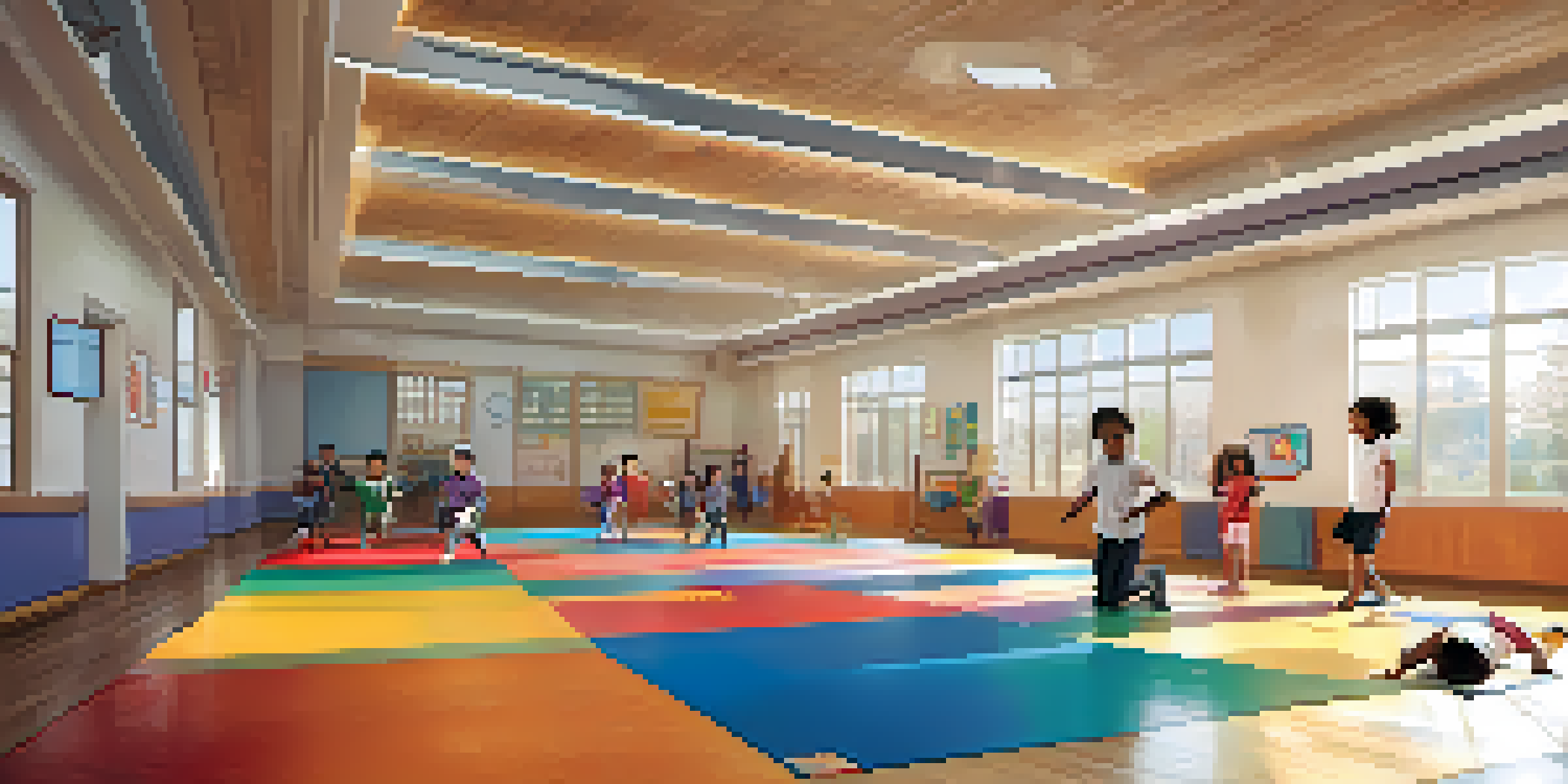Using Role Play to Teach Self Defense to Your Children

Understanding the Importance of Self Defense for Kids
Self-defense is about more than just physical safety; it's a crucial life skill. Teaching children how to protect themselves boosts their confidence and helps them respond to potentially dangerous situations. It's important to create a safe environment where kids can explore their emotions and reactions to fear or aggression.
The best way to predict the future is to create it.
In today's world, children face various kinds of threats, from bullies at school to strangers in public. Equipping them with self-defense techniques empowers them to handle these situations effectively. However, it’s essential that this education is approached in a fun and engaging way, which is where role play comes in.
By incorporating role play into self-defense training, kids can practice scenarios they'll likely encounter. This method allows them to learn by doing, which can be more effective than simply discussing concepts. Role play also helps children internalize responses, making them more instinctive when real-life situations arise.
How Role Play Makes Learning Fun and Engaging
Role play transforms learning into an enjoyable activity, taking the stress out of serious topics like self-defense. When children engage in pretend scenarios, they can explore different outcomes and strategies without fear of real consequences. This playful approach encourages creativity and critical thinking.

For instance, you might set up a scenario where a child has to respond to a bully. They can practice using their voice assertively or employing a physical technique in a safe and controlled environment. This kind of practice not only builds skills but also cultivates a sense of camaraderie and teamwork among peers.
Self-Defense Builds Confidence
Teaching children self-defense skills empowers them to handle dangerous situations and boosts their self-confidence.
Moreover, role play allows parents to become involved in their child’s learning journey. By participating, you can model appropriate behavior and provide instant feedback, reinforcing the lessons being taught. This shared experience can strengthen your bond while imparting vital skills.
Creating Safe and Realistic Scenarios for Practice
Setting up realistic scenarios is key to effective role play in teaching self-defense. Begin with simple situations, such as dealing with a pushy friend or an unfamiliar adult asking for help. The goal is to make the scenarios relatable so kids can connect and empathize with the characters involved.
Self-defense is not just about defending yourself from physical attacks; it is about developing the confidence to protect yourself and making informed choices.
As children grow more comfortable, you can introduce more complex situations, like escaping a grab or finding a safe space. It's essential to ensure that these scenarios are age-appropriate and that children feel safe throughout the process. This will encourage them to participate without fear of embarrassment or judgment.
Remember to debrief after each scenario to discuss what went well and what could be improved. This reflective practice helps reinforce lessons learned and allows children to voice their feelings about the experiences. It also gives parents insight into their child's understanding and areas where they may need more guidance.
Teaching Communication Skills Through Role Play
Self-defense isn't just about physical techniques; communication is equally vital. Role play can help children practice assertive communication, teaching them to express themselves clearly and confidently. This is crucial not only in self-defense situations but also in everyday interactions.
For example, a child might role play a scenario where they need to say 'no' to peer pressure. Practicing these conversations can help them feel more comfortable in real-life situations. Encouraging children to use their voices effectively can prevent many conflicts from escalating.
Role Play Makes Learning Engaging
Incorporating role play into self-defense training transforms learning into a fun activity, allowing kids to practice real-life scenarios safely.
Additionally, teaching children how to recognize and respond to verbal cues can enhance their awareness of their surroundings. Role play allows them to practice reading body language and understanding when someone may pose a threat. These skills are invaluable, as they help kids navigate complex social situations.
Encouraging Problem-Solving and Critical Thinking
Role play situations can also be designed to foster problem-solving skills in children. By presenting them with challenges during practice sessions, children learn to think on their feet. This ability is essential not only for self-defense but for life in general.
For instance, you might create a scenario where a child must find a way to escape a tricky situation without resorting to violence. This encourages them to consider multiple options and outcomes, enhancing their critical thinking abilities. The more they practice this, the better equipped they'll be when facing real-life challenges.
Moreover, discussing the results of different approaches during debriefs allows kids to learn from mistakes and successes alike. This reflective learning helps solidify their understanding and encourages them to take ownership of their actions. It's a powerful way to build resilience and adaptability.
Incorporating Real-Life Self Defense Techniques
While role play is a fantastic tool, it’s also important to incorporate actual self-defense techniques into your sessions. Simple moves like how to break free from a hold or basic striking techniques can be taught alongside role play scenarios. This combination creates a well-rounded approach to learning self-defense.
By practicing physical techniques in the context of role play, children can see how and when to use these skills effectively. For example, practicing a wrist escape move while acting out a scenario gives context to the action. This real-world application solidifies their understanding.
Communication is Key in Self-Defense
Effective self-defense includes teaching children assertive communication skills, helping them navigate conflicts and enhance their situational awareness.
Additionally, you can use props or safe equipment to enhance the learning experience. Soft pads or practice dummies can help children feel more comfortable while trying out their techniques. The goal is to ensure that they associate self-defense with confidence, not fear.
Fostering a Supportive Learning Environment
Creating a supportive and encouraging environment is crucial for effective learning. Children should feel safe to express themselves and make mistakes without fear of judgment. This emotional safety allows them to fully engage with role play and absorb the lessons being taught.
To foster this environment, praise effort over perfection. When children attempt a new technique or speak assertively, celebrate their courage, even if they don’t get it right the first time. This positive reinforcement can significantly boost their confidence and willingness to participate.

Also, encourage open communication between you and your child. Regularly check in to see how they're feeling about their self-defense training and role play activities. This helps you gauge their comfort level and adapt your approach to better suit their needs, ensuring they feel supported throughout their learning journey.